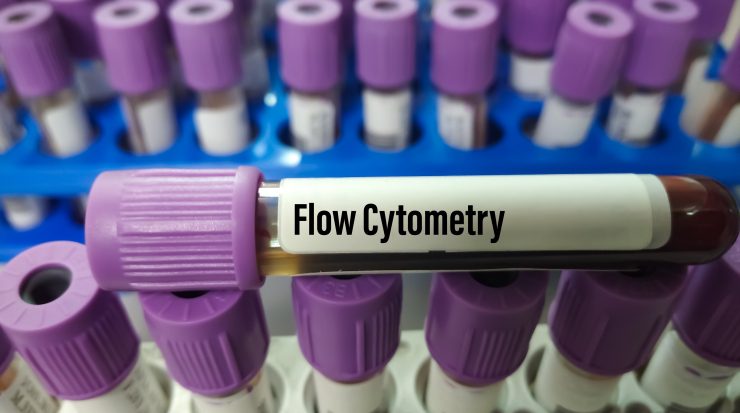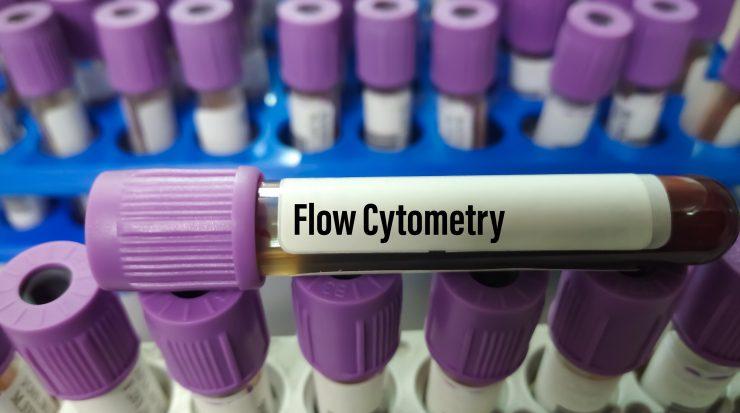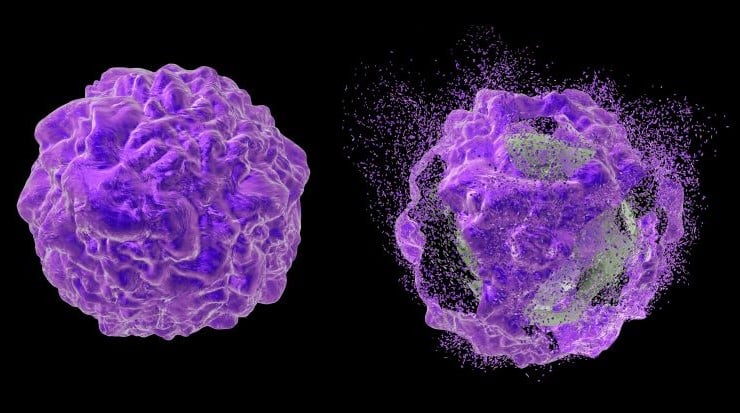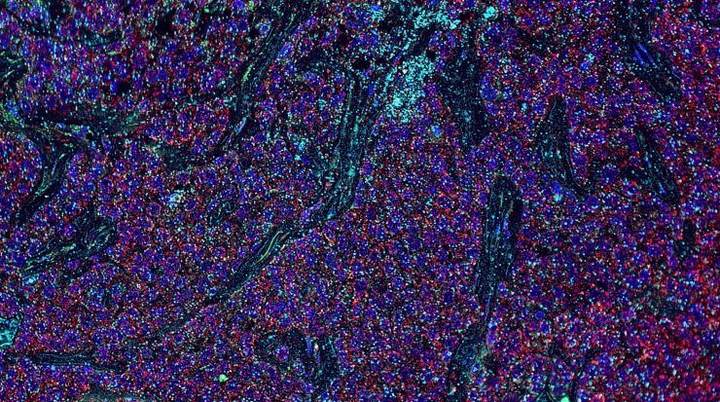Share a link
Staining for Flow Cytometry
Flow cytometry experiments typically involve detecting multiple targets simultaneously. To ensure accurate results, staining strategies should account for the biology of the different cell types being studied, the capabilities of the flow cytometer, and the properties of the various antibodies and fluorophores being used.

Understand the target biology
Learning as much as possible about the biological system being investigated is critical when developing a staining strategy for flow cytometry. Factors to consider include the choice of sample material, the number of markers required to clearly identify each cell type, and whether those markers are expressed at the cell surface or intracellularly. In certain situations, cell enrichment may be necessary, such as through the use of antibody-labeled magnetic beads. In other experimental settings, removing red blood cells from whole blood or tissue homogenates prior to immunostaining can help simplify immune cell analysis.
Familiarize yourself with your flow cytometer
Every flow cytometer is unique and it is essential that researchers familiarize themselves with the instrument being used. The excitation and emission profile of each fluorophore should be matched to the available lasers, filters, and detectors, and it is important to check that instrument settings such as laser power, flow rate, and detector voltage are correct for the application in question. It is advised that instrument performance be checked daily using calibration beads, although an advantage of many modern flow cytometers is that this process can now be automated.
Select antibodies that are validated for flow cytometry
Selecting antibodies that are verified for flow cytometry is a key step toward experimental success. Antibody datasheets should show clear validation data, including details of the immunostaining protocol that was used, and should provide recommended antibody dilutions that can be used as a starting point for in-house optimization. If a flow cytometry-validated antibody is not available for a particular target, publications can be useful sources of information for identifying suitable reagents.
We offer an extensive selection of primary antibodies that are validated for flow cytometry, along with many different fluorophore-labeled secondary antibodies, including mouse, rat, and human isotype- and subclass-specific options.
Take steps to minimize unwanted background signal
Factors that can cause unwanted background signal during a flow cytometry experiment include cellular autofluorescence, non-specific antibody binding, and the presence of dead cells, aggregates, or debris. Ways of mitigating these effects include using unstained controls to gate out cellular autofluorescence, incorporating an Fc blocking step into staining protocols to prevent antibodies from binding to Fc receptors on the surface of immune cells, and optimizing flow cytometry sample prep to maintain cell health. Other strategies for minimizing unwanted background signal include extending the duration of the blocking step, increasing the number of wash steps, and using a viability dye to exclude dead cells and debris from analyses.
Consider whether sequential staining is required
While some cell types can be characterized by the expression of cell surface markers alone, others require that a combination of extracellular and intracellular markers be detected for their correct identification. This can be problematic if antibodies and/or fluorophores are incompatible with fixation and permeabilization methods. A popular means of addressing this issue is to stain for extracellular antigens first, before fixing and permeabilizing the cells to allow for intracellular staining. If a reversible permeabilizing agent (e.g., saponin) will be used, it should be included in every wash step and antibody staining mix to ensure antibodies can access intracellular targets.
Think carefully about panel design
When a flow cytometry experiment will detect multiple markers simultaneously, panel design is vital to achieve reliable results. As well as matching fluorophores to the instrument's lasers and detectors, it is suggested that bright fluorophores be paired with scarce targets to increase the likelihood of these being detected, and that fluorophores with narrow profiles be used to minimize spillover, especially when running larger panels. Other recommendations include distributing dyes with overlapping spectra on different cell types (rather than matching them to different markers on the same cell type) and using tandem dyes or fluorophores with large Stokes shifts to increase the level of plex if the number of available lasers becomes a limiting factor.
Our flow cytometry-validated antibodies have over fifteen different fluorophore choices, including several tandem dyes.
Always include relevant controls
A well-designed flow cytometry experiment will include several different types of controls to ensure data accuracy. In addition to positive and negative biological control samples, other controls to consider include unstained samples for determining autofluorescence and light scatter; isotype controls for establishing non-specific antibody binding; fluorescence-minus-one (FMO) controls for setting the cut-off point between background fluorescence and positive populations; and single-stained (compensation) controls for addressing spillover.
We have over 200 unlabeled, biotinylated, and fluorophore conjugated isotype controls from mouse, rat, human, goat, and rabbit hosts for use in flow cytometry.







